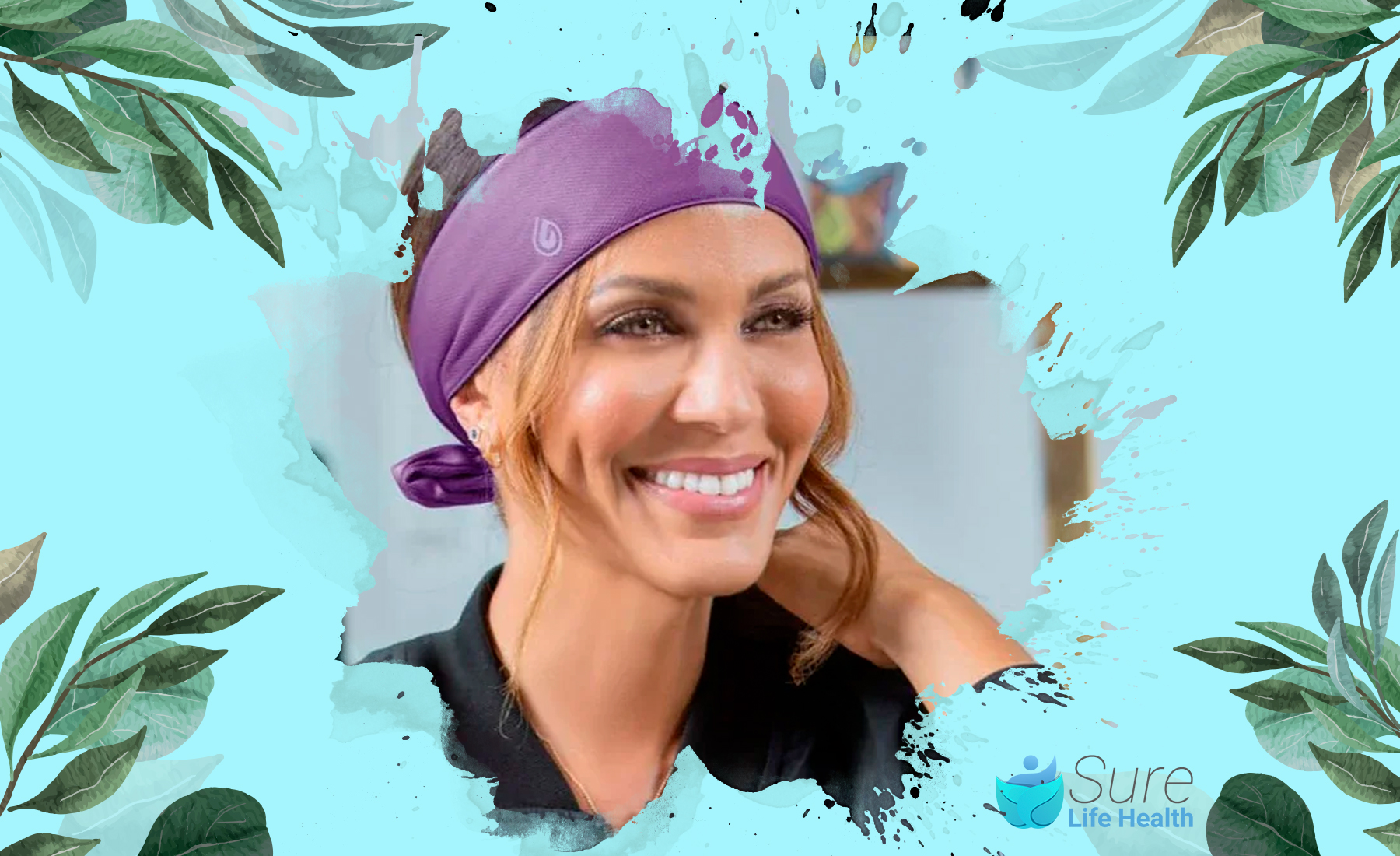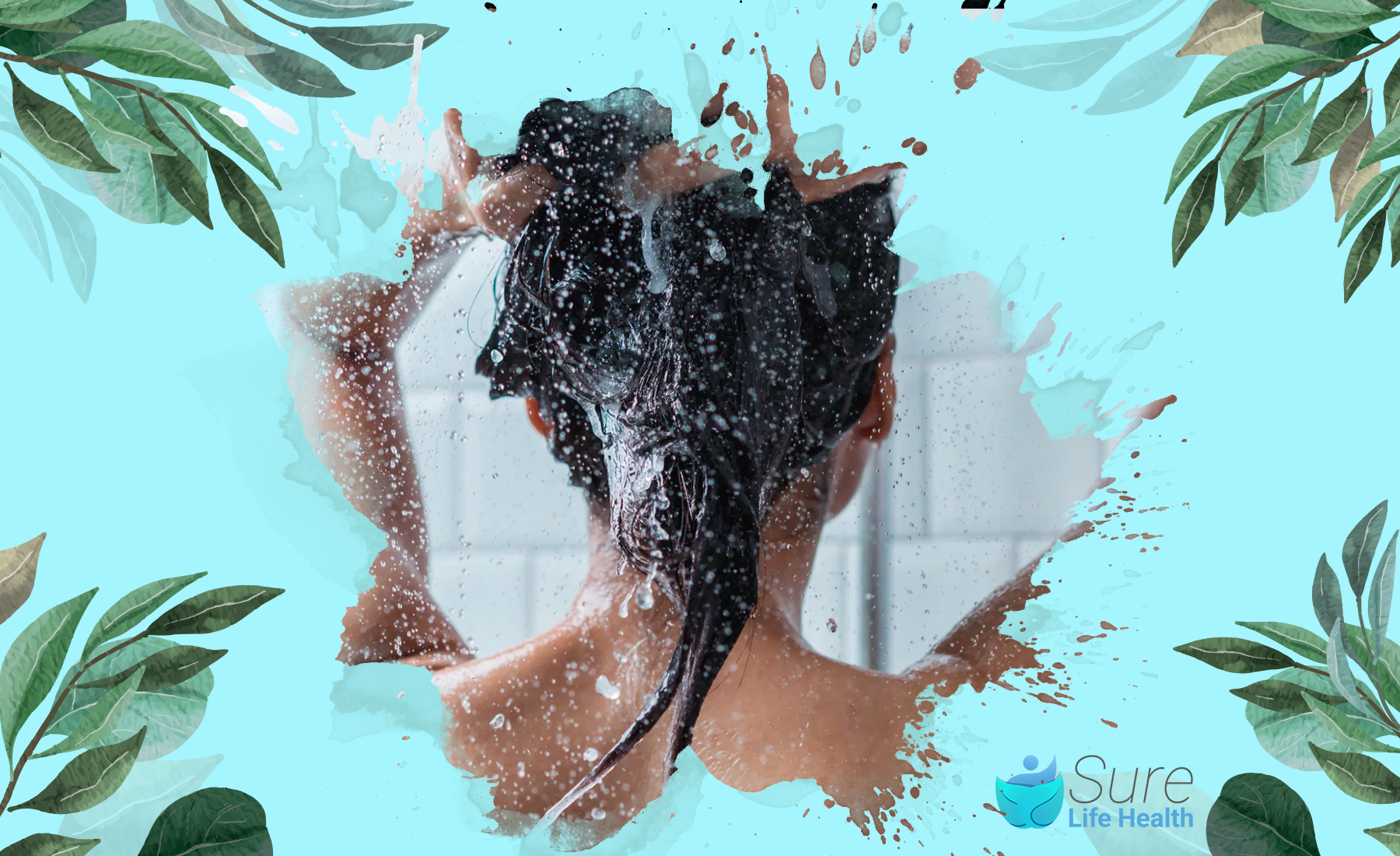Sweating during exercise offers numerous health benefits. However, many may wonder, is sweat bad for your hair?
How to protect hair from sweat during exercise? In this blog from Sure Life Health, we’ll delve into these concerns.
Continue reading to learn effective strategies for protecting your hair as you engage in sweat-inducing workouts, ensuring your exercise routine remains worry-free.
Does Sweat Harm Your Hair?
Engaging in physical activities means you’ll inevitably experience sweat buildup on your scalp and body. While sweat itself isn’t directly harmful to your hair, the way you manage your hair before, during, and after exercise plays a crucial role in maintaining its health.
Leaving sweat to dry on your scalp can be detrimental, as it may clog hair follicles when mixed with bacteria, leading to irritation or damage. This is particularly concerning for individuals with scalp conditions. Particularly, you should be concerned if you have dandruff, eczema, or psoriasis. Sweat can exacerbate symptoms like flakiness, dryness, or fungal infections.
Additionally, the high salt content in sweat can affect dyed hair, altering its color. Hair becomes more fragile when wet, and thus more susceptible to breakage.

How to Protect Hair from Sweat During Exercise
Protecting your hair from sweat during exercise is crucial for maintaining its health and appearance. Here are six effective strategies:
Pick Suitable Accessories
Choose hair accessories wisely—opt for gentle hair ties and avoid those with metal clasps. Consider fabric scrunchies or gentle clips and pins for long hair, ensuring they don’t have sharp edges that could cause breakage. For shorter hair, use small, no-slip grips to keep hair out of your face.
Choose a Headband or Sweatband
Headbands and sweatbands are excellent for keeping sweat away from your hairline. Opt for absorbent and comfortable options that stay in place without being overly tight.
With a variety of styles available, including those with non-slip grips and moisture-wicking materials, you can find one that suits your needs.
If you sweat profusely, consider owning multiple bands to ensure cleanliness. This is vital for avoiding breakouts on your forehead or scalp.

Consider Your Workout
If your hairstyle is important, adjust your workout times accordingly.
You might schedule evening sessions if mornings are too rushed or align your workouts with days you work from home, allowing time for hair care post-exercise.
Use Dry Shampoo
Dry shampoo can absorb sweat and oils, leaving your hair fresh and clean even after intense workouts.
Available in various formulas to meet specific needs such as boosting volume or reducing oiliness, some are even tinted to blend with your hair color. Apply it by shaking the can, spraying at the roots, and massaging it in before brushing or styling.

Use Spraying Treatments
For those with curly or textured hair, spraying your hair and scalp with oils like argan oil can minimize post-workout frizz.
Moisturizing treatments and leave-in conditioners post-exercise can also help restore moisture and define curls.
Fasten With A Hair Tie
Avoid hair ties with metal fastenings, as these can snag and break your hair.
Instead, use snag-free elastics, spiral hair coils, or fabric scrunchies which are gentle on the hair and prevent damage.

Why Is It Important to Protect Your Hair from Sweat During Exercise?
Securing your hair during gym workouts is crucial for multiple reasons:
Minimizes Distractions
Loose or unsecured hair can be a significant distraction during exercise, potentially hindering your focus and performance.
Ensuring your hair is tied back allows you to concentrate fully on your workout, optimizing the effectiveness of your exercise routine.
Prevents Potential Injuries
Unsecured hair poses a risk of getting caught in gym equipment. This can lead to painful situations such as hair pulling, tugging, or even pinching. These should be completely avoided when using weights or other heavy machinery.
Such incidents not only cause immediate pain but could also throw you off balance, increasing the risk of more severe injuries.
Helps Regulate Body Temperature
Sweating is a natural bodily response to physical exertion. If your hair is left loose, it can absorb sweat, becoming wet and heavy, which adds discomfort and makes it more challenging to stay cool.
Keeping your hair up and away from your neck and back promotes better heat dissipation, helping to regulate your body temperature and maintain comfort throughout your workout.
Methods To Keep Your Hair Fresh After Working Out
Maintaining hair freshness after a rigorous workout is essential for both appearance and health. Here are practical steps to ensure your hair remains vibrant and healthy:
Let Your Hair Breathe
Immediately after your workout, remove any hair ties or bands. Allowing air to circulate through your hair helps it to dry naturally and reduces sweat residue.
Detangle Your Hair
Physical activity can cause knots. Use a detangling spray on the ends of your hair and gently work through tangles with a wide-tooth comb to minimize breakage and smooth your hair.
Rinse with Water
A quick rinse can significantly refresh your hair by removing sweat and salt buildup. This is especially useful if you’re short on time and need an immediate cleanse.
Use Dry Shampoo or a Dry Texture Spray
For those times when a full wash isn’t feasible, dry shampoo can be a lifesaver. Spray it at the roots to absorb excess oil and sweat. Alternatively, a dry or wet texture spray can revitalize flat hair, adding volume and texture.
Hair Washing
If your scalp feels itchy or overly sweaty, it might be necessary to wash your hair. Opt for a mild, sulfate-free shampoo to cleanse effectively without stripping hair of natural oils.

Avoid Tight Hairstyles Post-Workout
Instead of immediately styling your hair into a tight updo, allow it to remain loose for a while after exercising. This helps prevent breakage and reduces scalp tension.
Conclusion
How to protect hair from sweat during exercise? Now you are equipped with a number of ways. From employing headbands to utilizing dry shampoo, these methods ensure your workout is free from hair worries.
We’d love to hear about your experiences with these strategies. Share your results in the comments below. Also, if you have any other hair-related questions or concerns, let us know so we can assist you further in maintaining healthy and vibrant hair even during your most intense workouts.
Don’t forget to explore more informative and helpful blogs from Sure Life Health, where we continue to uncover the best in natural health care.
Professor Gaye Cunnane, PhD, MB, FRCPI
As the Director of Health and Wellbeing at RCPI, Professor Gaye Cunnane is at the helm of initiatives aimed at enhancing the health and well-being of RCPI Trainers and Trainees. Her role extends beyond administration; she is also a respected clinical professor of rheumatology and a consultant rheumatologist at Trinity College Dublin (TCD) and St James’s Hospital. Prof. Cunnane’s medical journey began at TCD, where she graduated from medical school, and her path has been marked by both clinical and academic excellence.
After completing her basic clinical training in medicine, she embarked on PhD studies at University College Dublin and St Vincent’s University Hospital. Her research during this period was focused on prognostic markers in early inflammatory arthritis, a project that saw her collaborating with esteemed universities across Europe, including in Switzerland, The Netherlands, the UK, and Sweden.
Prof. Cunnane’s career took her to the University of California, San Francisco, where she spent three years delving into research on new treatments for lupus. Her academic prowess led her to the University of Leeds in 2001 as a senior lecturer, before returning to Ireland in 2003 to assume her current roles. She has also served as the National Specialty Director for Rheumatology training in Ireland, Programme Director for Basic Specialist Training with RCPI, and as a past President of the Irish Society for Rheumatology.
PUBLISHED ARTICLES
“Rheumatic disease differentiation using immunoglobulin G sugar printing by high-density electrophoresis”: Published in The Journal of Rheumatology, this study reflects her in-depth investigation into rheumatic diseases.
“Benefits of exercise in patients with rheumatoid arthritis: a randomized controlled trial”: This research work, highlighting the positive impact of exercise on rheumatoid arthritis, underscores Prof. Cunnane’s dedication to practical, patient-centered research.
Additionally, Prof. Cunnane has made notable contributions to the Annals of the Rheumatic Diseases, discussing early referral, diagnosis, and treatment of rheumatoid arthritis. She has also been involved in a study on the NCBI platform investigating exercise benefits in rheumatoid arthritis patients.
Professor Gaye Cunnane’s career is a testament to her commitment to improving patient outcomes in rheumatology through rigorous research, clinical excellence, and dedicated teaching. Her work continues to influence the field of rheumatology, both in Ireland and internationally.

